Adolf Hitler and Josef Stalin saw themselves as the ideological arch-enemies. And yet, the two dictators in 1939 agreed on a non aggression Pact and divided Eastern Europe among themselves. The consequences are felt to this day.
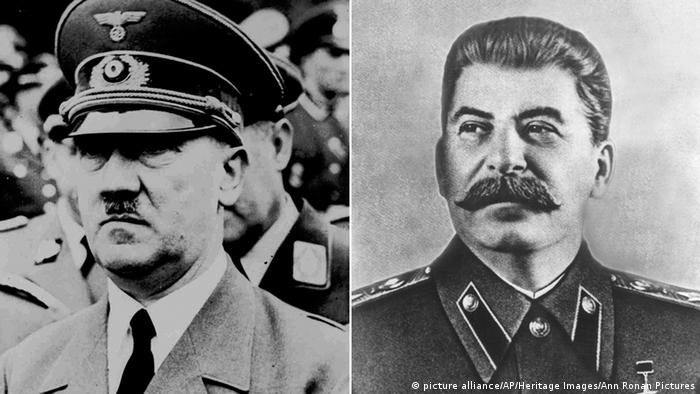
It was a cynical statement. And you went for both sides first. For his planned attack on Poland, Hitler secured the neutrality of the Soviet Union. Since this would give Poland the guarantee powers of Britain and France on the Plan, he avoided provisionally a two-front war. Even more so – with a simultaneous trade agreements, both dictators agreed to Soviet raw material deliveries against German machines.
Thus, Hitler wanted to make a possible British naval blockade, which had led in the First world war to the German defeat, ineffective. Stalin believed, in turn, the German Empire will reaming in a long war with the Western powers. In the longer term, he held a war against the German Reich, but inevitable and wanted to take advantage of the breathing space for further upgrade.
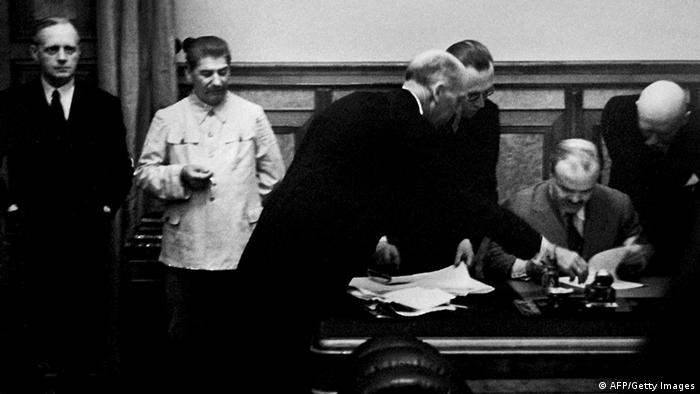
Signing the contract in Moscow on 23.8.1939: on the left, Reich foreign Minister von Ribbentrop, next to Stalin, on the Desk of the Soviet foreign Minister Molotov
The Crucial point, however, was not part of the official contract, but in the Secret additional Protocol: the countries between the German Reich and the Soviet Union, for the case of “territorial and political rearrangements” in the areas of Influence on informed. So, for example, Estonia, Latvia, the Eastern part of Poland, and Romanian Bessarabia were to fall to as the “spheres of interest” to the Soviet Union, the Western part of Poland to the German Reich.
Endless Suffering
On 1. Of September 1939, attacked the German Wehrmacht in Poland. Well two weeks later the Red army marched from the East into Poland and then occupied one after the other in the Soviet sphere of influence assigned areas. The division of the whole of Eastern Europe was in the first two weeks of the beginning of the Second world taken war. German and Soviet military, intelligence and administrative officials worked together closely.
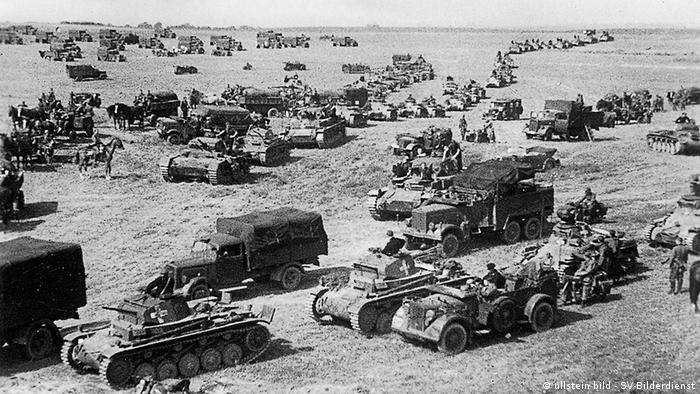
A few days after signing the contract rolled German tanks to Poland
Poland disappeared – again – from the political map. The Baltic States, which were not acquired until after the First world war in 1919, their independence, were Soviet republics. The Romanian Bessarabia to the Ukrainian Soviet Republic was attached. Romania had been virtually “driven into the arms of Nazi Germany,” explains the Romanian historian Cosmin Popa.
For the people on both sides of the separation line of endless suffering started now: Hitler continued his habitat – and racial ideology in the occupied territories, and allowed millions of people to assassinate, while in the Soviet part of large sections of the population displaced and many members of the old elites are killed or put in forced labor camps were deported.
The Hitler-Stalin Pact, held for almost two years. In June 1941, as Hitler had half subjected to Western Europe, he felt strong enough to handle the Alliance partners themselves. It is a crucial was overconfidence. In the following Winter, the military began to turn the dial. But for the peoples of the “spheres of interest”, it meant several years of war, through the misery, displacement, and millions of deaths.
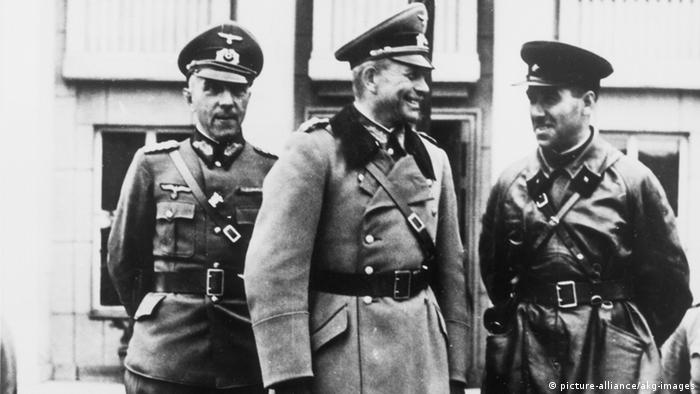
German and Soviet military worked in the division and subjugation of Poland, closely
The Trauma remains
The Trauma of the German-Russian cooperation at the expense of the other remains in the affected countries. In Poland, the Hitler-Stalin Pact is still valid today as an example of collusion of the two big neighbours, which lead to night. In 2006, the then compared the foreign Minister of Poland, Radosław Sikorski, the Nord Stream Pipeline with the Hitler-Stalin Pact, which led to great excitement on both sides.
The Pact is in the Polish historiography as the “Fourth division” in the country – an allusion to the three divisions in the 18th century. Century, when Poland by Russia, Prussia, and Austria was divided, and from the world map for more than a century disappeared.
In the Second world war, the Soviet invasion also led to the arrest of almost 22,000 Polish officers and policemen, who were executed in the spring of 1940 by the Soviet secret service NKVD in Katyn and two other places, with a shot in his neck hung.
Also for Romania, the impact was still considerable, says the historian, Popa. The existence of the Republic of Moldova is a direct result of the Pact. “He was nothing more than the expression of the totalitarianism in foreign policy. It is the clear claim to power of two totalitarian regimes of the Communist and the national socialist was.”
Stalin is being rehabilitated in Russia
The Pact had consequences of the end of the war, Because the USSR was one of the victorious powers, could not prevent the Western powers, “that the areas that had been beating the Soviet Union in the Wake of the Hitler-Stalin Pact, and remained at the end of the Second world war in the Soviet Union,” says the historian Jörg Ganzenmüller. Until the beginning of the 1990s, such as the Baltic States regained their independence.
The Hitler-Stalin Pact was after the war, many years in oblivion. In the East, it was taboo during the Cold war. In the Federal Republic of Germany, he played in the historic reappraisal of the post-war period is not a big role. Only after the turn of 1989, in Europe, the reminder came back into the public discussion.
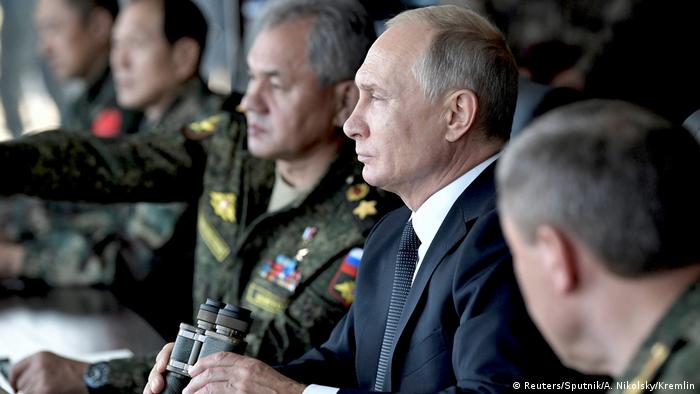
Russian President Vladimir Putin has defended the Hitler-Stalin Pact in the recent time
But the wounds are not healed, on the contrary. Ten years ago, to 70. Anniversary, had referred to Russia’s President, Vladimir Putin, the Pact in a “letter to the poles” as immoral. This insight has long since faded. A few months after the Russian annexation of the Ukrainian Crimea, Putin defended the contract; from the former point of view, it had been necessary. This year’s commemorative war before the 80 years celebrations on the occasion of the beginning of the Second world Putin remains remote. In today’s Russia, Josef Stalin is rehabilitated to a large extent. In a survey this year, 70 percent of the surveyed Russians were positive about Stalin’s role in the country.
New, old Fears
So the Fears in Poland and the Baltic States are growing again, you could again become the Victims of a policy in which Germany and Russia agree on their costs. The construction of the direct gas pipeline Nord Stream 2 from Russia through the Baltic sea to Germany, bypassing the transit countries, has become a Symbol of this fear. Recently, Poland has not drawn in the dispute, the United States on his page, as it feels from its neighbors, at least in this point, enough to be taken seriously.
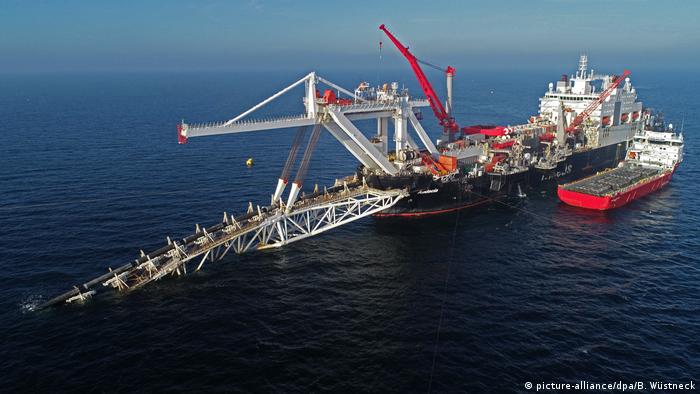
Symbol of ancient Fears: the construction of the gas pipeline Nord Stream 2 in the Baltic sea
“Historical analogies you can draw,” says scientist the whole of müller. The fear is exaggerated: “Poland and the Baltic States are much closer than Russia.” The common membership of the EU and NATO speak of. “Nevertheless, the Germans pursued a foreign policy sometimes, perhaps, too reckless foreign policy interests, is not taken into account these existing Fears and this leads to irritation.” Therefore, the historian advises the Federal government, more to these old fears.